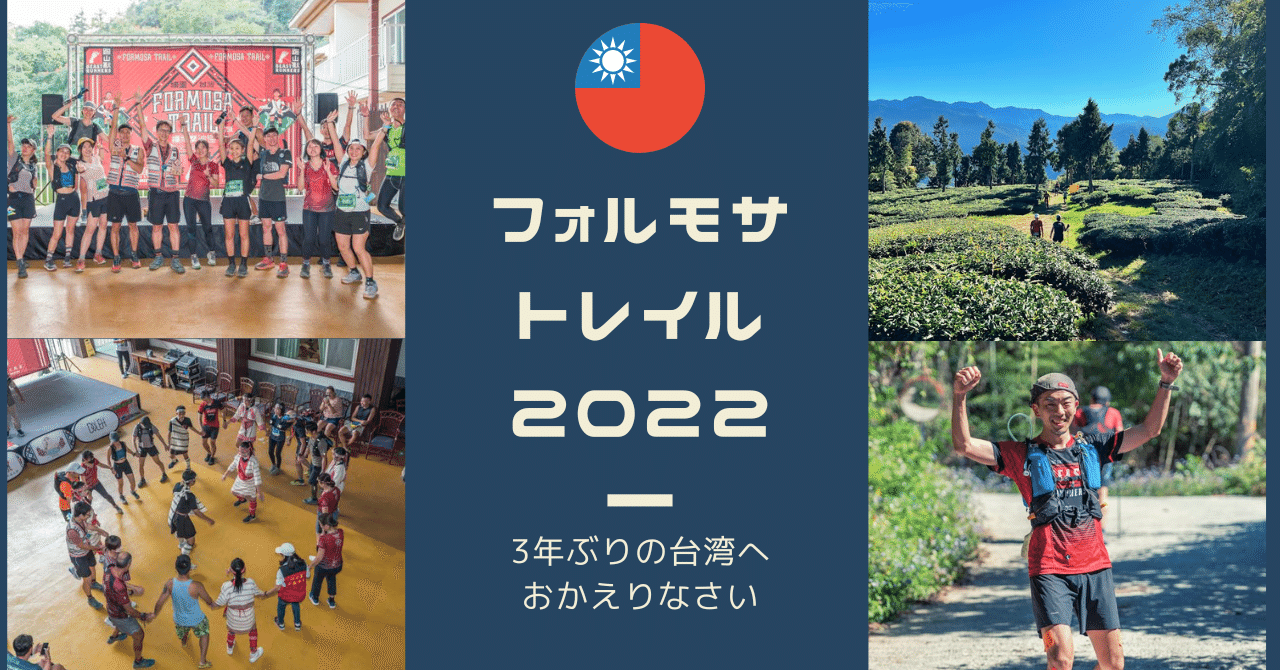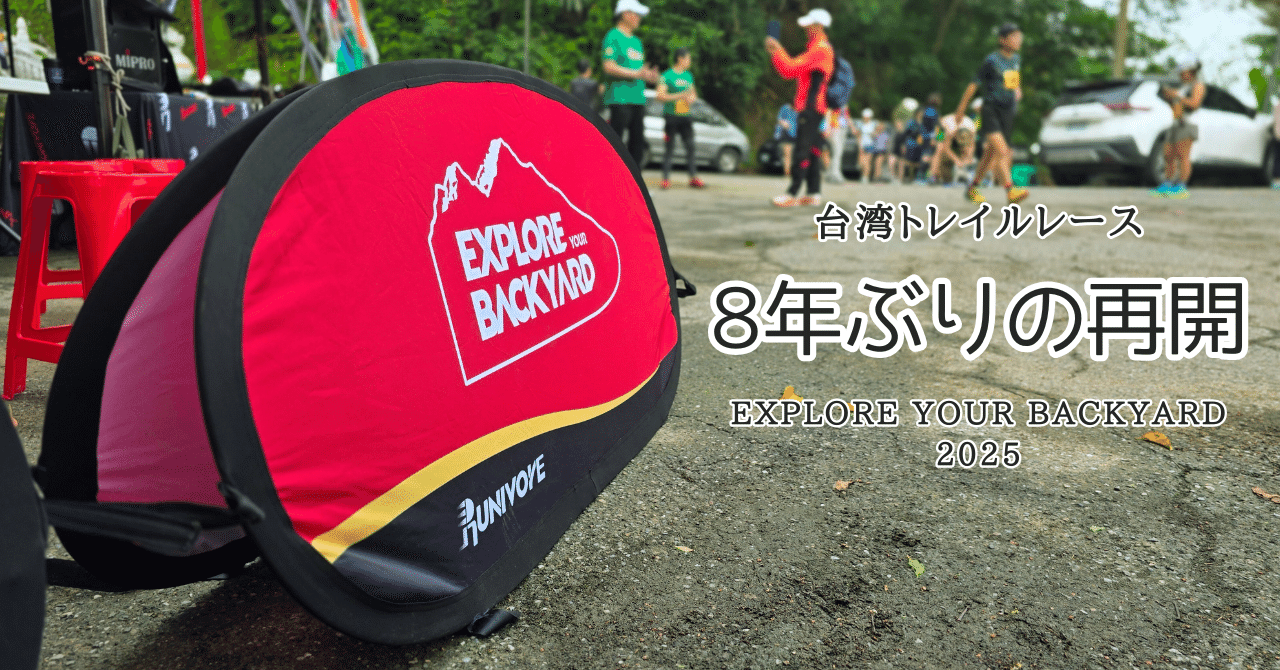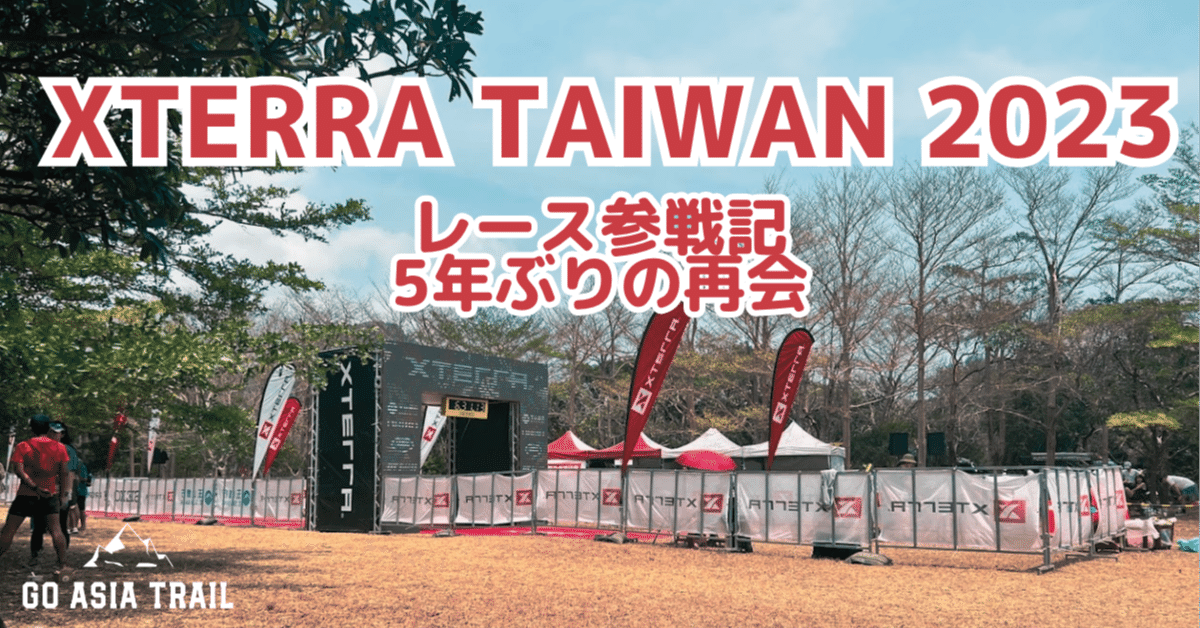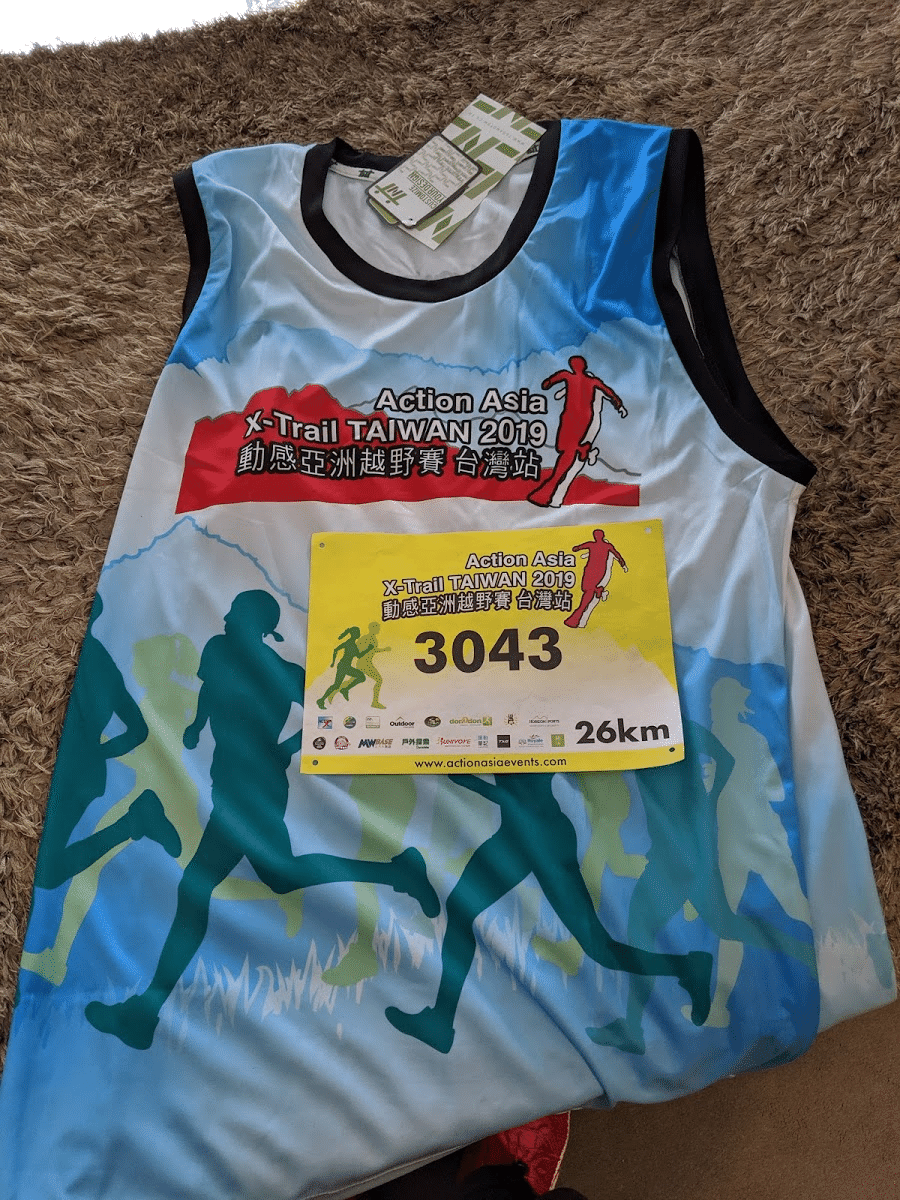The long new coronavirus, which began in December 2019, closed the road to overseas travel for three years. After a long period of endurance, the ban on inbound travel to Japan will be lifted in the fall of 2022, and Taiwan will resume accepting tourists from October 13, 2022, as if to coincide with the ban (some restrictions apply; notification will be made in late September 2022).
When Taiwan resumed accepting tourists from overseas, I immediately took action, as I had long made up my mind that I would definitely go to Taiwan as soon as the ban was lifted. Then, in the spirit of "I'll go run some mountains while I'm at it," I entered the 40k Formosa Trail, which I also ran in December 2018. So finally, GO ASIA TRAIL is back in action!
Well, it's been a while since I've posted an international race. This time, I have upgraded my filming equipment, and I am competing with an iPhone 13 Pro and a small camera, the Insta360 Go2. Since we have entered the age of video over the past few years, this article is also presented with video in some places.
Itinerary and Travel Expenses
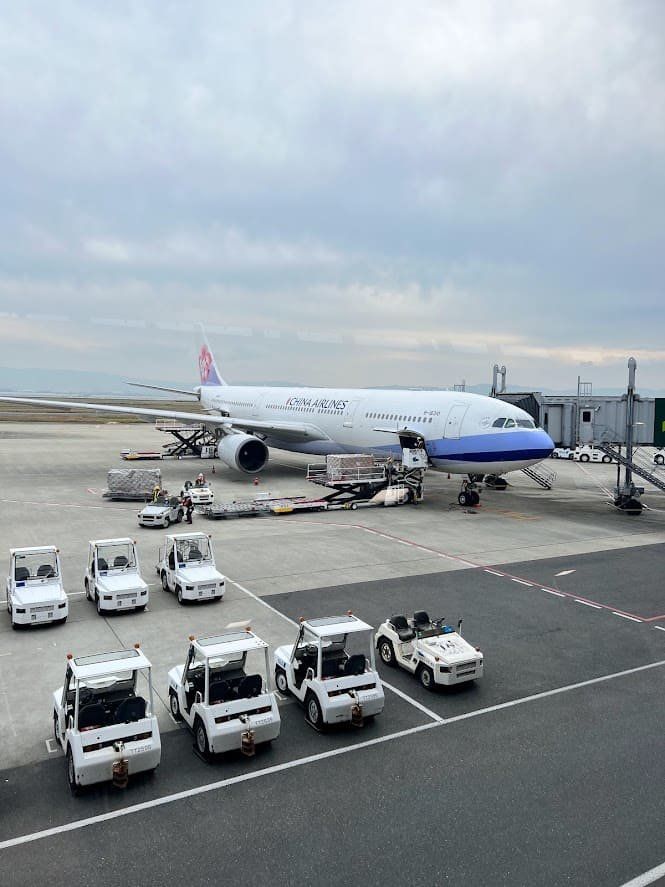
- November 17 (Thursday) [Taipei] Enter Taiwan. One night in Taipei. Dinner with Taiwanese friends and e-bikes.
- November 18 (Fri) [Puli] From 9:30am, take the convention shuttle bus from Taipei to Puli (4 hours). Saturday, November 19, 2022 [Puli] Race day (from 5:30am)
- November 20, 2022 (Sun) [Puli] Day of return. 9:00am Depart Puli by express bus. Transfer to THSR (High Speed Rail) at Taichung and transfer to Taoyuan Metro at Taoyuan for the airport. Return home.
The itinerary is 4 days and 3 nights. I had actually thought about staying a little longer, but due to the rising cost of airline tickets, the weak yen, and the fact that I could not stay in dormitories or other cheap accommodations due to Taiwan's voluntary quarantine, I decided to go minimalist this time, as staying too long would be too costly.
- Airfare (China Airlines, round trip, Kansai International Airport - Taipei Taoyuan): 76,000 yen
- Hotel ( Re-Change Hotel Taipei, Taipei) 6,000 yen
- Hotel ( West Hotel Puli, Puli) 23,000 yen
- Local transportation (bus, MRT, bullet train, etc.): 5,000 yen
The most expensive part of the trip was the airfare, which cost about 50,000 yen even with LCCs Peach and Tiger Air Taiwan. Due to my schedule, China Airlines was the only option, so I was excited to go with them this time. By the way, here are the prices of airline tickets (Kansai Airport→Taipei) before Corona.
- LCC (Peach, Tiger Air Taiwan, etc.): 17,000-30,000 yen (round trip)
- FSC (EVA Air, China Airlines, Cathay Pacific, etc.): 30,000 to 45,000 yen (round trip)
The reasons for the high prices are probably due to the weak yen and the cost of fuel, but I think the most important reason is that the number of flights is less than half of what it was before Corona. Also, hotel prices in Puli have skyrocketed for some reason. 4 years ago, I believe, they were 1000 TWD per night (about 4500 yen at today's exchange rate), but they have become extremely expensive.
It seems that the price is not soaring because of the race, and other dates are also expensive. It was higher than Taipei. Travel expenses are lightly over 100,000 yen (excluding entry fee).
Voluntary Quarantine Period
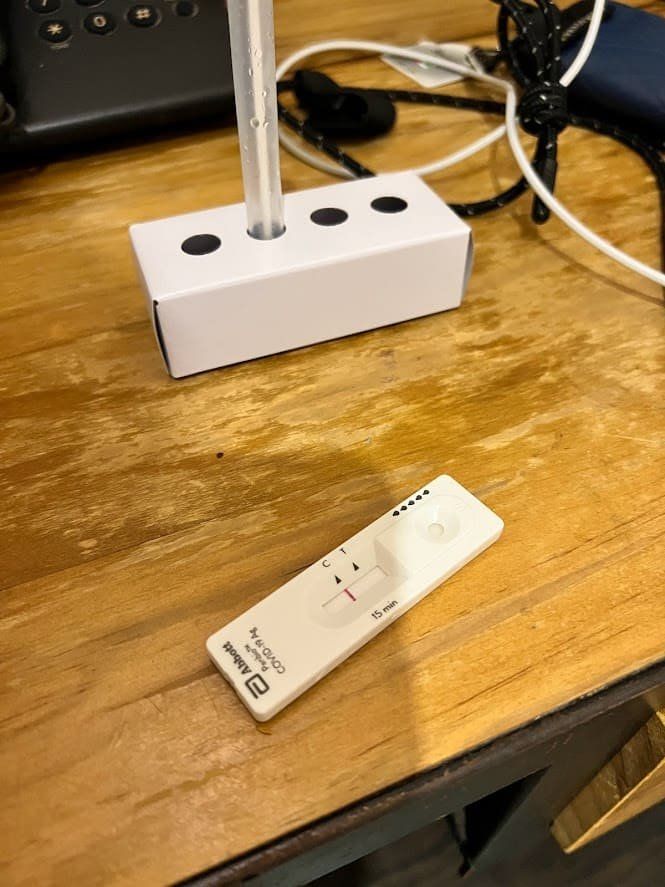
Effective October 13, 2022, restrictions on entry into Taiwan have been greatly eased, and entry for tourism purposes is now permitted. In principle, there is no quarantine.
However, you will be given an antigen test kit at the time of entry, and you must test yourself once every two days for seven days from the date of entry using the antigen test kit. You are not required to report the test results to the local authorities. When I actually tried it, it was easier than I thought it would be, and not that much trouble. However, you need to put a long cotton swab in the back of your nose and grind it inside, which makes me sneeze every time I do it.
As for accommodations, the rule is that in principle, each person has one room, with a shower and toilet in a private room, and that you do not share the room with other guests. Therefore, as a rule, dormitories and rooms with shared bathrooms and toilets are not available for lodging.
However, there is an exception to the rule that friends and family members who arrive on the same flight can share the same room, so the rule is not that strict. In fact, a European-American couple who were participating in the same race were staying in the same room (they were in the same room next to each other).
I also felt that wearing masks is more strict than in Japan. In Japan, there is no problem if you do not wear a mask outside, but in Taiwan, you are required to wear a mask even when you are outside the building. Also, as far as I could see, basically only people were wearing non-woven masks, and I did not see anyone wearing cloth or urethane masks, which are sometimes seen in Japan.
I think this is probably a temporary measure, and I am sure it will disappear over time.
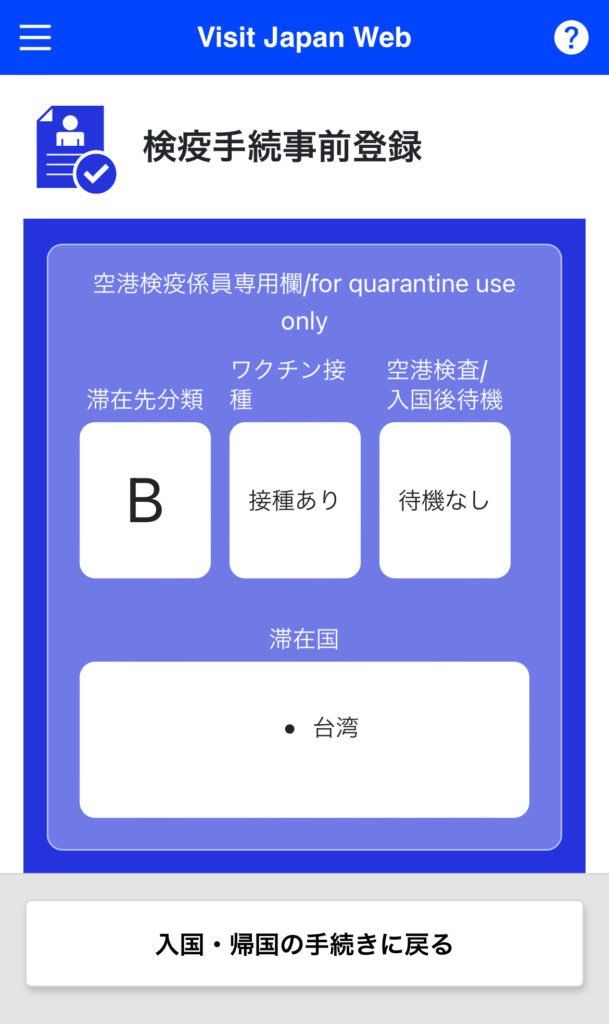
Also, when returning to Japan, you need to register your vaccination record (or PCR test results) on the Visit Japan Web in advance, and then register your return information (flight number, from which country, etc.). Vaccination records can be obtained from the " New Corona Vaccination Certificate " on the smartphone application. If these are pre-registered at least 6 hours prior to entry, immigration clearance will be completed smoothly.
The Race
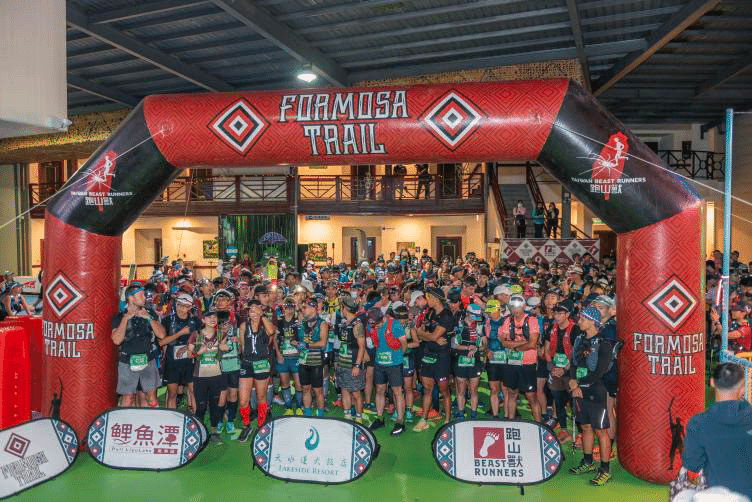
The 40K, which I entered, starts at 5:30am on Saturday, 11/19.
The Formosa Trail has four other courses: 104K, 75K, 16K, and 8K. Since the previous race was also a 40K, I considered entering a longer distance, but since it was my first time overseas in three years, I decided on the 40K to familiarize myself with international travel.
Usually, there are about 100 participants from Japan in the Fomosa Trail, but this time there were only 4 including myself. 8K, 16K, 40K, 104K, and the distances were all different, so we did not encounter any Japanese runners. I think it was partly because Taiwan suddenly reopened to tourists and it was difficult to adjust the schedule, partly because there are still some restrictions even though it has reopened, and partly because of the rising cost of travel.
I saw many Westerners, but most of them seemed to live in Taiwan, and I had the impression that there were not so many runners from overseas.
The weather that day was sunny and the temperature ranged from 21 to 31 degrees Celsius, about the same as in July in the Kansai region. The weather was relatively good because the race started early in the morning and most of the course was shaded by trees to avoid direct sunlight. However, it was quite hot where there were no shade trees, and the last part of the race, less than 10 km of forest road and road, was quite difficult due to the lack of shade trees.
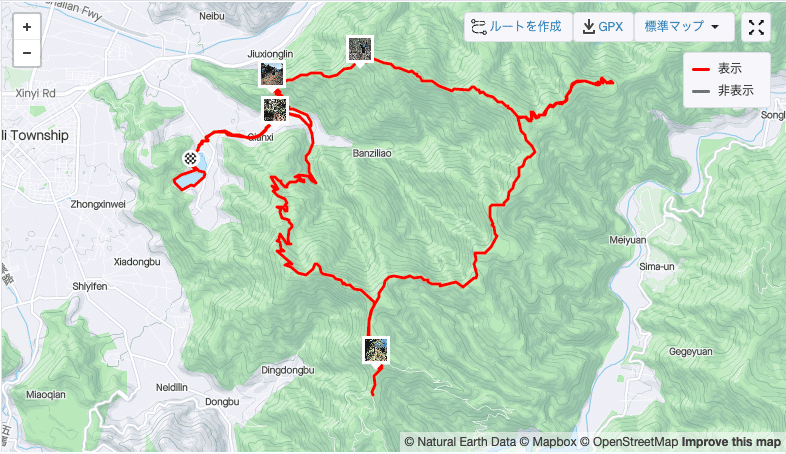
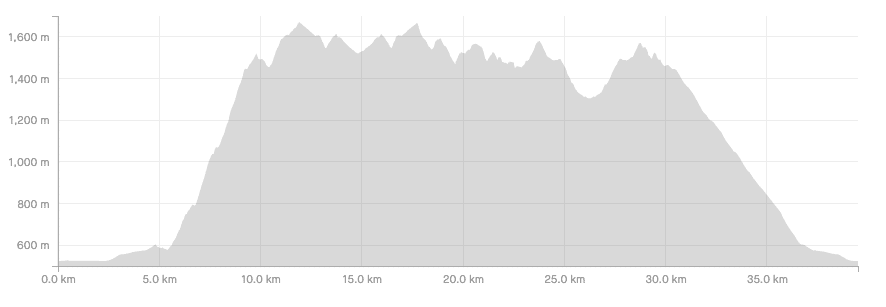
The course was like the one shown above, with climbs all the way up to about 12 km. The first 5km is normal on roads and forest roads, and from 5km to the highest point is a steep climb. After the highest point, the course becomes more manageable, but the trails are rough and technical in places, and the difficulty level is relatively high (but still on the gentle side for a Taiwanese race).
The course is quite a bit like running through a forest, but there are some open areas as shown in the following photos. The area around Puli is said to be one of the tea growing areas, and the Formosa Trail runs through tea plantations. I ran in the same area last time, but I like the scenery here the best.
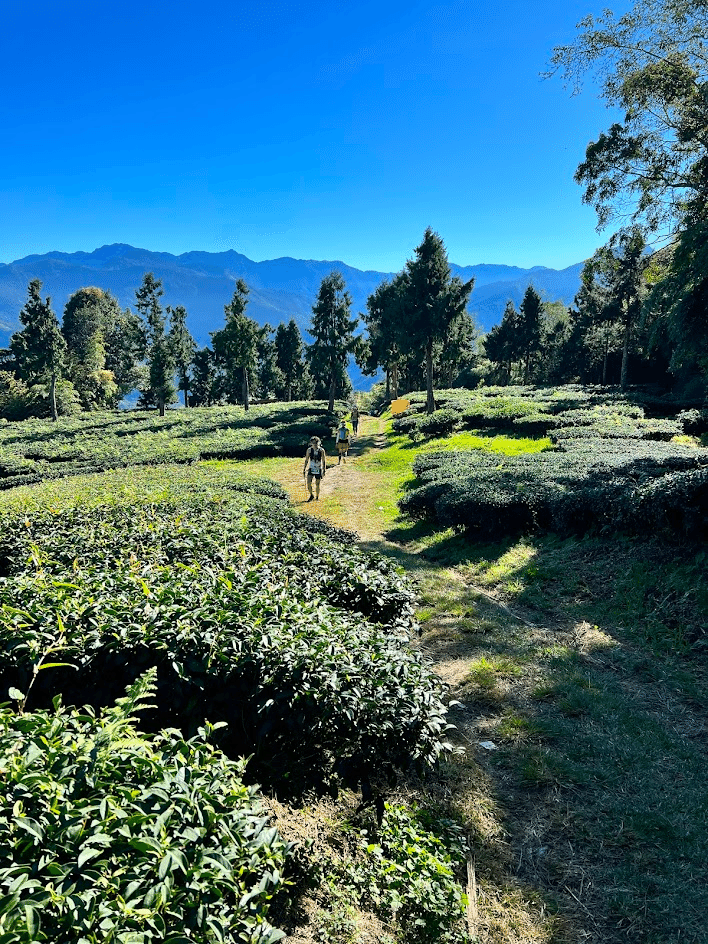
Since I had run this trail before, I had a good idea of the course, so it was easy to make a plan. I thought I would take it slow on the climbs in the first half of the race, run the trails in the middle part of the race, and then run the forest roads and roads from the 30km point to the finish line. As a result, I finished the race as I had planned. I was not injured and there were no accidents, so I had a good run. And I was able to finish about 1 hour and 15 minutes faster than last time, beating my personal best and placing 99th (out of 233 runners) in the 40K men's category.
I had a lot of help from various runners and volunteers along the way. Last time, I was running with other Japanese runners, so I was able to run while talking with them, but this time, I was running alone. But this time, I was running alone. However, when they realized that I was a Japanese from overseas, they called out to me like crazy. They called out to me in Japanese, "Ganbatte! and other such words in Japanese.
A volunteer said to me in Chinese, "2km to go to the aid station. My Chinese pronunciation is wrong.
Also, I had to run with a Taiwanese runner all the way through the forest road that runs from the 30K to the finish line, but on the way, the outsole of my shoes got stuck in the mud as hard as I could, and my grip was no longer effective. And the Taiwanese runner was very helpful in helping me scrape off the mud with a wooden stick. It was one of those moments when I felt the kindness of the Taiwanese people.
After that, I, who could only speak a few words of Chinese, and the Taiwanese runner, whose English was not good enough, ran with each other through body language throughout the race. This was very fun. In the last kilometer, he made a spurt, but I was quite fatigued from the heat, so I couldn't catch up with him, but we managed to finish the race.
After the finish line
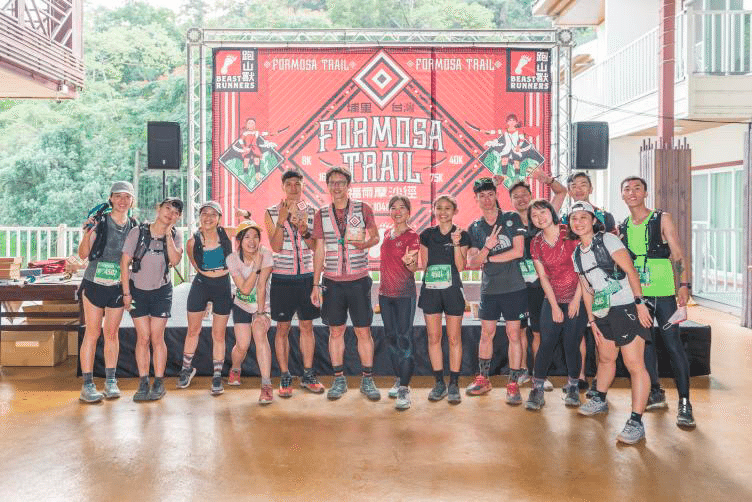
The nice thing about the Formosa Trail is that you can enjoy it after the run. You can eat rice (yakisoba, soup, whole roasted pork, etc.) and drink beer (however, this time I didn't have much of an appetite due to the heat, so I ate almost nothing except for a recovery meal I brought from Japan).
There will also be an awards ceremony (under 40K) and a dance performance by the indigenous people of Taiwan. The indigenous Taiwanese dancers involved some of the runners in the dance, and I participated in the dance.
The day after the race, Formosa Trail also holds an after party. There will be roasted pork, beer, an awards ceremony (105km, 75km), and dancing by the indigenous people of Taiwan. However, due to my flight schedule, I was unable to attend this year's party. Tears
Also, a Taiwanese runner who ran with me at the end of the race introduced me to many of his friends, and we were able to interact in various ways. He also introduced me to someone who could speak a little Japanese, which helped me a lot afterwards. Many of the runners seemed to be a year younger than me in age, and I got the impression that many of them were in their 20s. Like Taiwan, the average age of trail runners in Asia is younger than in Japan (see the group photo above).
Regarding aids
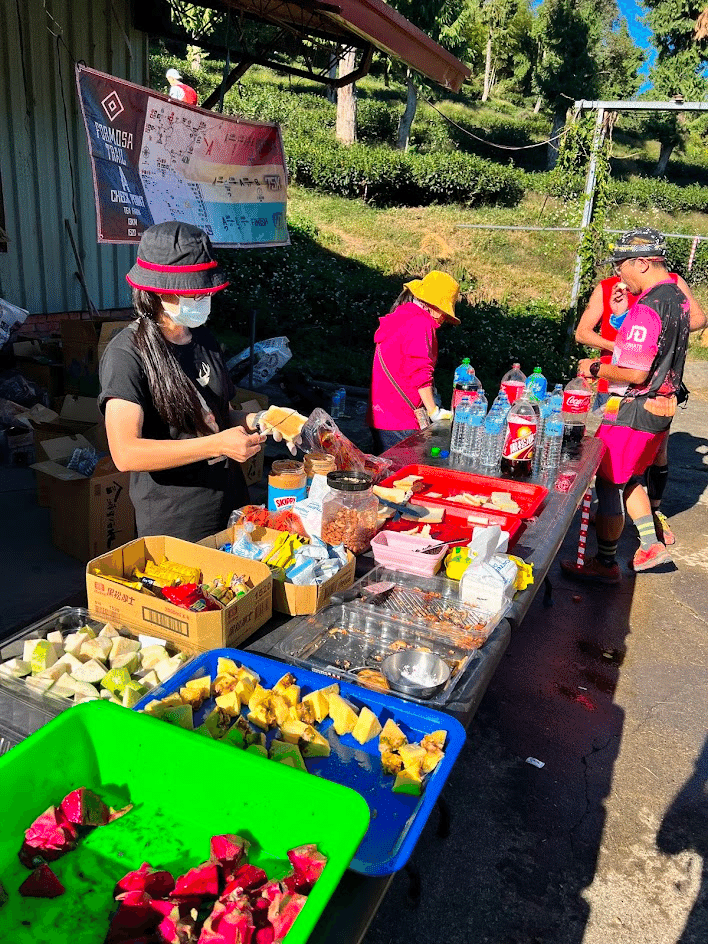
As expected of Taiwan, there is a huge variety of fruit. There were pineapples, bananas, dragon fruit, mandarin oranges, and some pear-like fruit whose name escapes me. There are also peanut sandwiches and snacks.
As for drinks, they serve cola, sports drinks, milk tea, root beer (黑松沙士), salon-pass-scented cola, and water. As one would expect from a Taiwanese restaurant, there is a "hei sheng sha shi" (black pine soda) available. I used to have a problem with it, but now I can drink it normally.
Also, stir-fried Taiwanese food and fried noodles are served at CP2. Tapioca milk tea, which was available last time, is not available...
Regarding the equipment
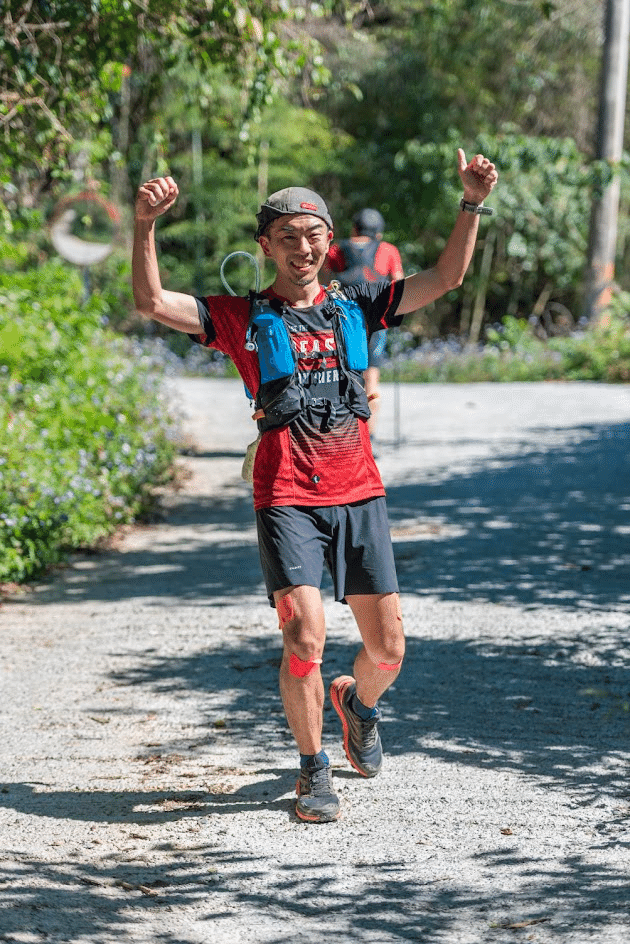
Equipment on the day of the race (photo by a Taiwanese volunteer photographer, given to me later via a friend)
As is often the case in Taiwanese races, the amount of water required is much higher than in Japanese races, and the Formosa Trail requires runners to carry at least 2 liters of water. Therefore, our sacks were heavy. w We were equipped as if we were running a race of about 100 km. In fact, it was not so much that I consumed 2 liters of water between aids, but water is important in Taiwan where the temperature is high.
Because I needed to carry more than 2 liters of water, I am running with the 2022 model of this 15L sack this time. It has a new color and some minor upgrades.
The clothing is 跑山獸 (Taiwan Beast Runners) original quick-drying T-shirt, which I purchased via international shipping two years ago when I couldn't make it to Taiwan due to Corona. It seemed like many runners were running in this wear. There were also a lot of people in the T-shirts that were in the novelty packet the day before!
And here are the shoes. Decathlon's Maximum-type trail shoes. I've been wearing these for most of the race. They are relatively light, grip well, and are easy to run in, just like road shoes. It is a very well-balanced shoe and can be used all-marty.
And I was reminded once again that the Decathlon has taken root in Taiwan. From what I saw, I got the impression that quite a few people were using Decathlon products (sacks, clothing, and shoes) (as were the Taiwanese runners I ran with at the end of the race). Decathlon Taiwan started in 1990 and already has a history of more than 30 years. It has a longer history than Japan.
Novelties
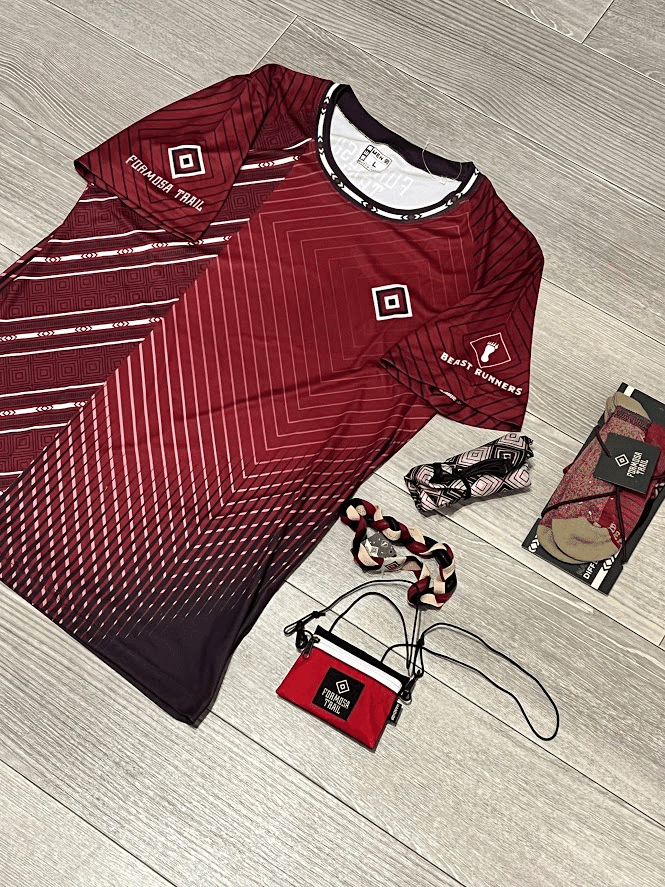
The novelties for this year's Formosa Trail are as follows.
- T-shirts
- Hair bands
- Socks
- Eco-friendly bag
- Small wallets (for finishers only, made by Taiwanese garage brand HANCHOR )
The coloring is based on the colors of the indigenous people of Taiwan, and the colors are vibrant. As is the case every time, the novelties of the Formosa Trail are of high quality.
This time, finishers will receive not a medal but a small, practical outdoor wallet. Personally, I am more pleased with this kind of practical thing. Incidentally, I still use the eco-bag I received four years ago on a daily basis.
After running Taiwan for the first time in 3 years and the Formosa Trail for the first time in 4 years
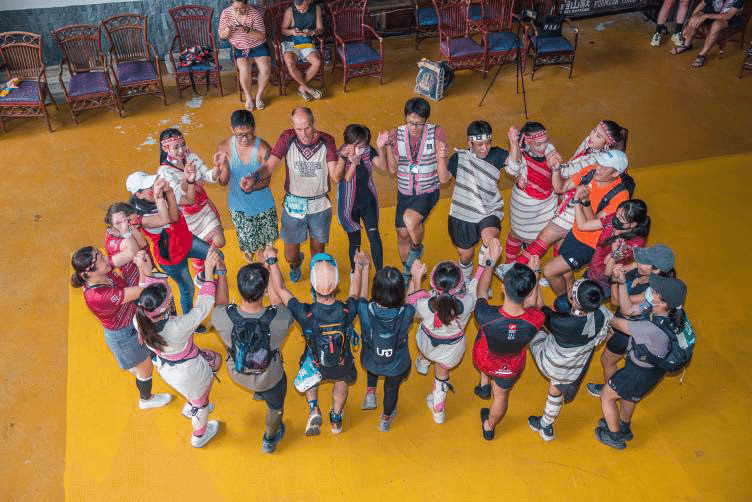
This trip was the best 4-day/3-night trip to Taiwan I have ever taken.
For the past year or two, I have been racing only domestic races all the time. Of course, there are many domestic races that I like, but I can't stop enjoying the more surreal atmosphere of overseas races. It was also great to make friends with people from Taiwan and Canada through the Formosa Trail this time. It is very difficult to make friends with people from different countries through a race unless it is an overseas race.
Also, on the day I entered Taiwan, I went to a Taiwanese-style pub (hot fry) with a Taiwanese friend and had Taiwanese food and beer. Taiwanese restaurants and Taiwanese cafes have increased in number in Japan, but the local food is still delicious! Also, I had frog meat for the first time. It really tasted like chicken (only with more bones). After that, I enjoyed the night in Taipei by visiting Taipei 101, Apple Store Taipei, Taiwan Governor's Office, and other tourist attractions in Taipei City.
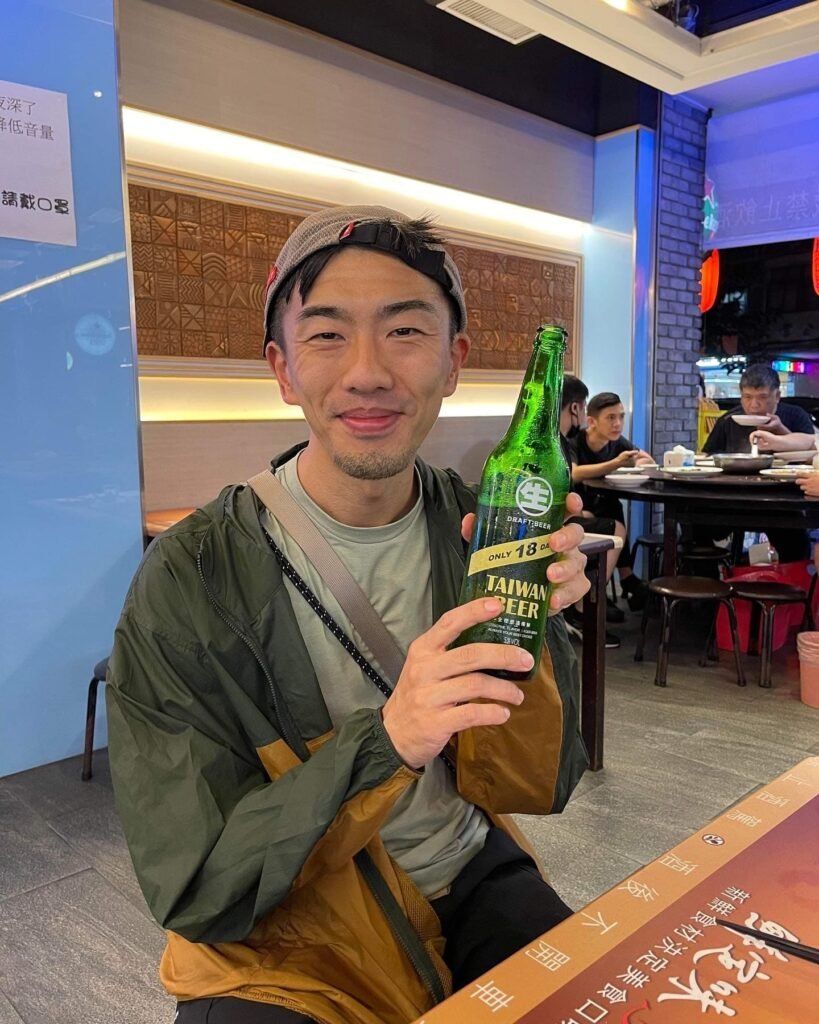
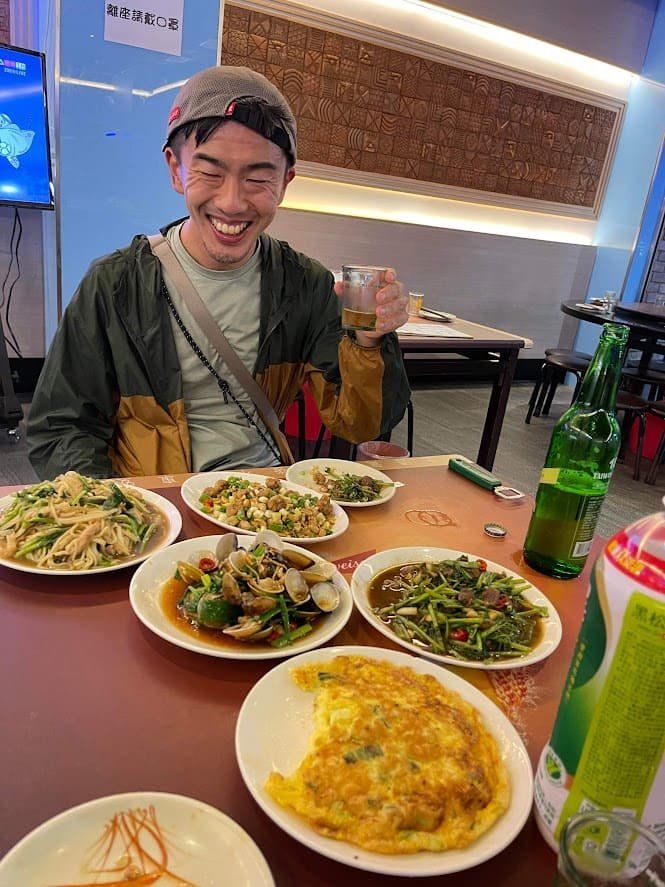
I also visited a Decathlon store in Taipei City (Taipei Guilin Store).
As some of you may know, the stores in Japan (Nishinomiya and Makuhari) will unfortunately be closed in the summer of 2022, and now only the EC site is available in Japan. So, this is my first visit to a physical Decathlon store in a while. The Taipei Guilin store is located in the same building as Carrefour, which is open 24 hours a day until 10pm. Located near Ximending in Taipei, the store has a great selection and all the latest gear for trekking.
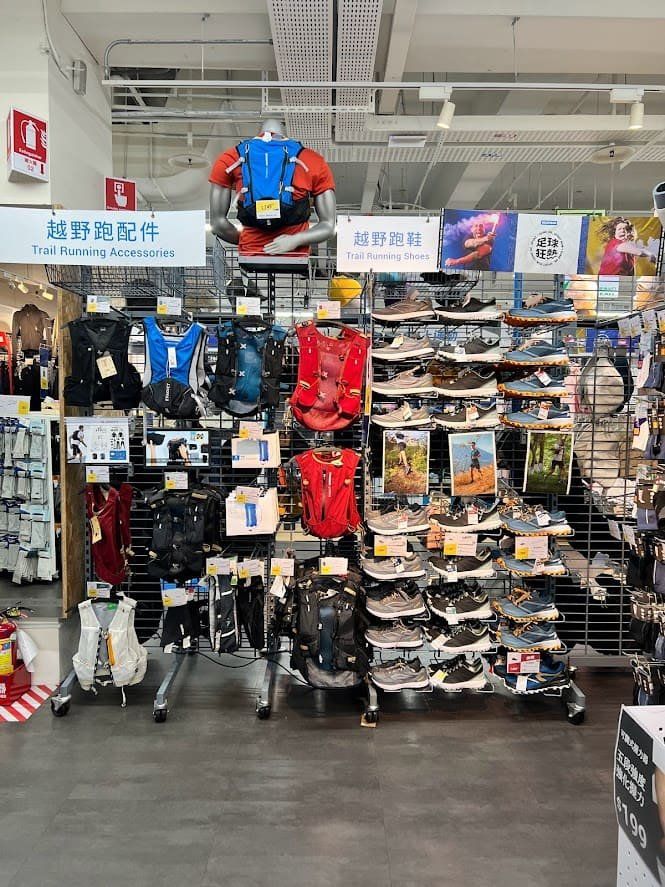
Also, Decathlon Taiwan has supplements (APTONIA) and supplemental foods that are not yet available in Japan. Since I was in the mood, I bought some and used them in the race. The mango-flavored gummies on the far left were sweet and sour and tasted great even in the heat of the race.
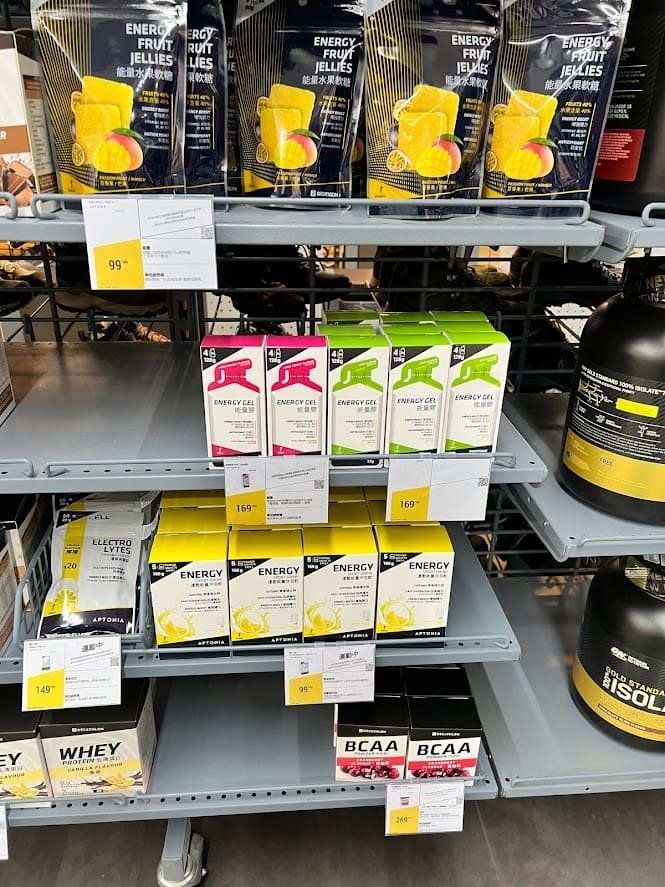
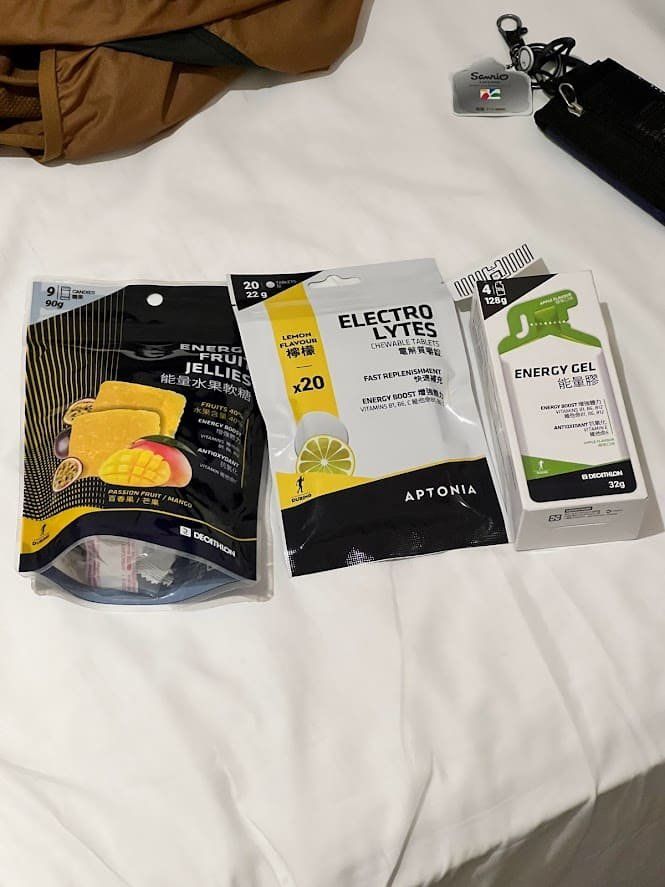
Also, Taiwan is famous for Taiwanese sweets such as tofu (soy milk pudding) and taro balls (taro cakes). I had them here and there every day. Recently, there are more and more stores in Japan that serve Taiwanese sweets other than tapioca milk tea, but the local ones are cheaper, more plentiful, and tastier. I think the sweetness is also more moderate in Taiwan. I think this is a good way to enjoy Taiwanese races, both for carbo-loading and post-race recovery.
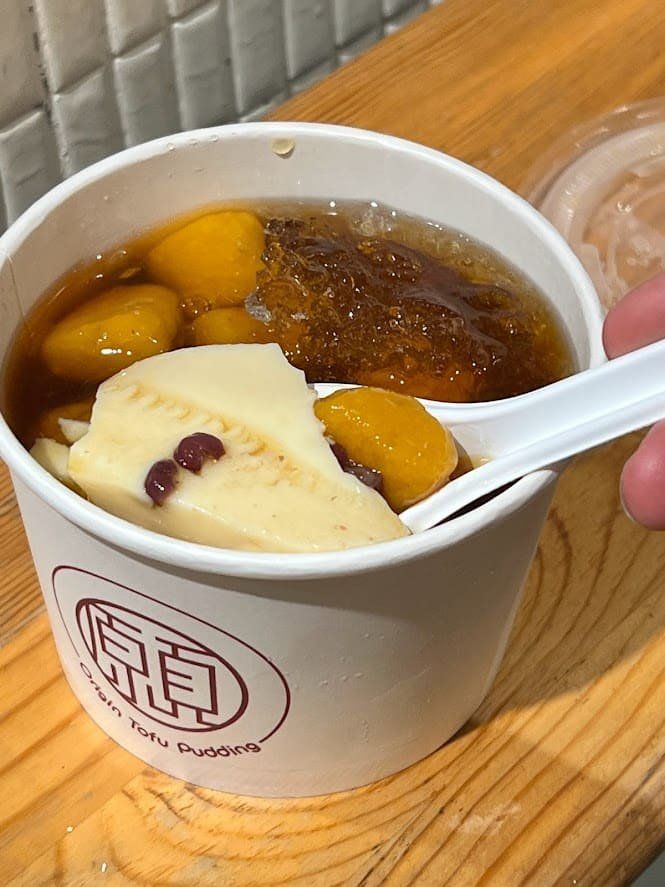
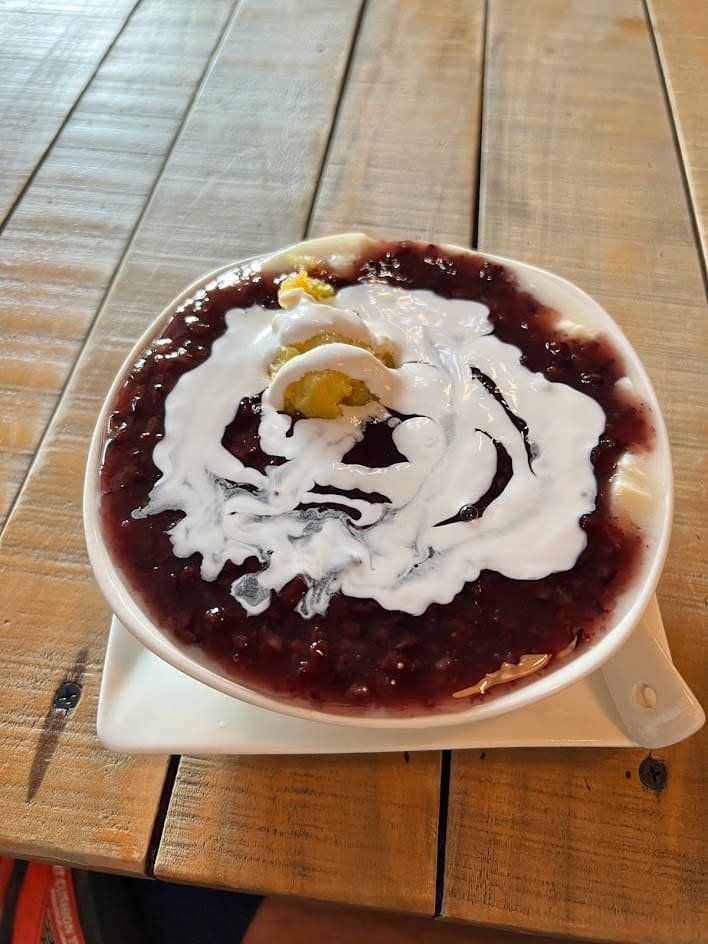
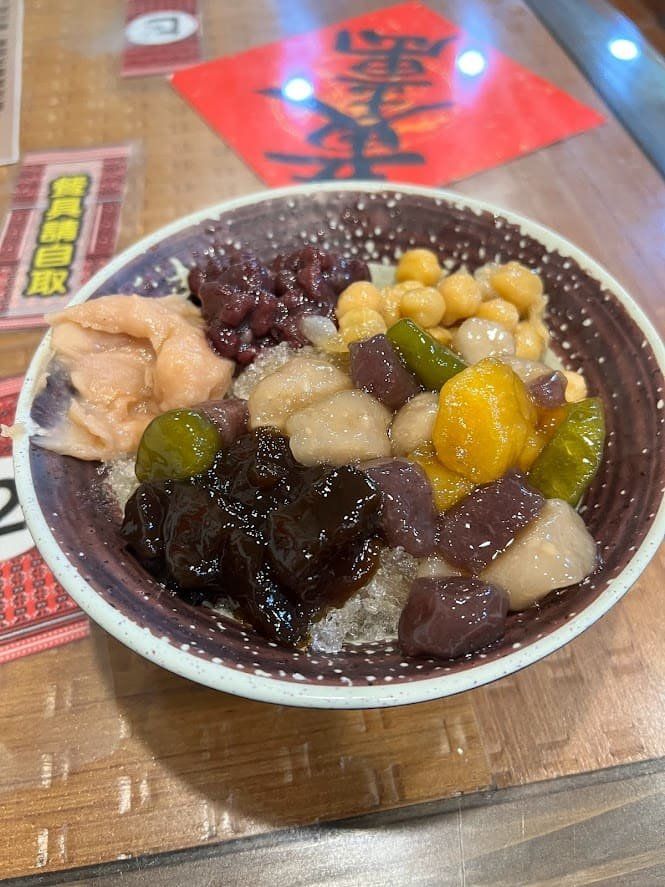
Well, it was really fun. I would like to run the Formosa Trail again next year. Next year, I plan to enter the 75km or 104km race. I would also like to run races in other countries besides Taiwan.
Lastly, here is a digest movie of the Formosa Trail shot with the Insta360 GO 2. Please take a look at it to get a feel of the race.
